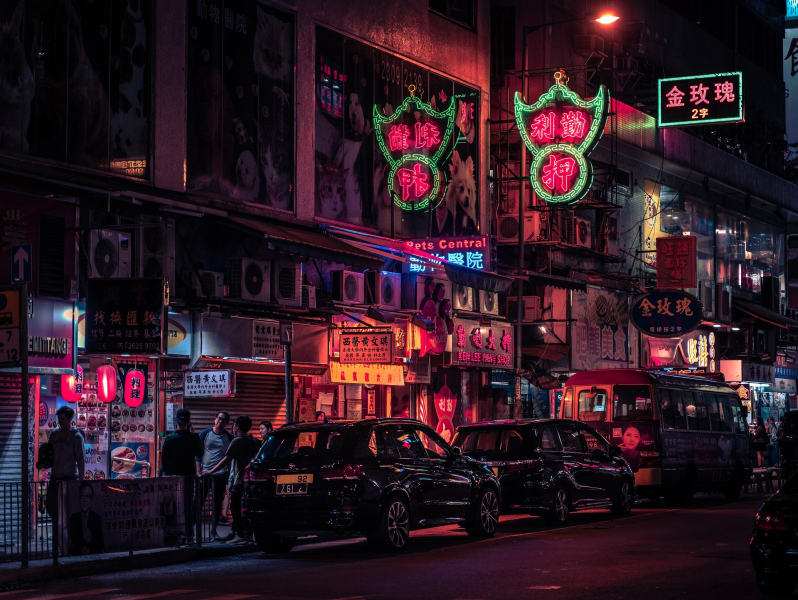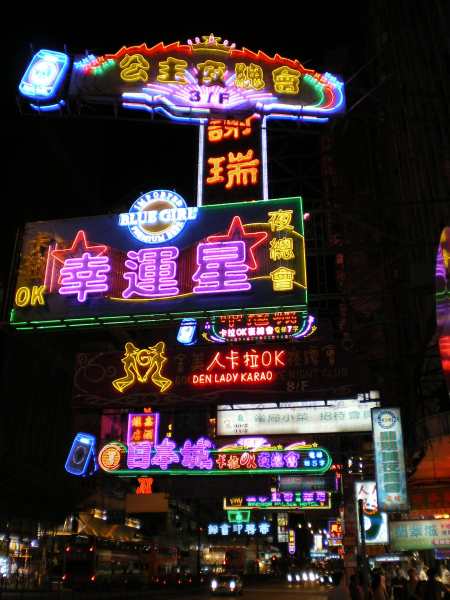Keeping the Lights on in Hong Kong
Today, we hope the lights never go out in Hong Kong. The University of Houston presents this series about the machines that make our civilization run, and the people whose ingenuity created them.
Recently I watched a poignant film about the neon signs that once filled Hong Kong’s busy streets. The movie, called Dang Fo Laan Saan, “A Light Never Goes Out,” follows a widow who tries to revive her dead husband’s neon sign shop. To honor her husband, she wants to make one last, spectacular neon sign, despite new lighting technology and city laws restricting the sign’s content, location, and size.
Neon signs are iconic part of Hong Kong. From the 1950s through the 1980s, when Hong Kong was a center of global trade, neon signs were ubiquitous in the city skyline. Department stores, restaurants, and businesses large and small embraced the vivid lighting. The handmade signs formed by bending glass tubes were perfect for rendering Chinese writing, and the fluorescent colors caused by gas produced less heat than incandescence. Neon enabled huge signs that cost little to light, even all night. For decades the small city glowed with more than a hundred thousand neon signs within less than twenty square miles. It also hosted two of the largest neon signs in the world, including one which ran the length of a skyscraper.

photo credit: Philippsaal, via Pixabay
Today, however, Hong Kong’s neon signs are disappearing fast. As the movie shows, cheap, shatter-resistant, and infinitely changeable LED technology is replacing hand-shaped neon. A different government has also made new laws causing the few remaining signs to be taken down.
The movie, A Light Never Goes Out, presents neon signs as a metaphor for Hong Kong, and for Hong Kong film, for which the city is also famed. The actress Sylvia Chang, who plays the widow trying to revive neon signs, has been making movies for more than fifty years. During her long career, the actress has seen the once exciting cinema of kung fu superstars like Bruce Lee and Jackie Chan dwindle to a shadow of its former self. The best new movies from Hong Kong, like A Light Never Goes Out, are modest stories made for a shoestring and probably seen by few audiences beyond Hong Kong.
Some of the same political and technological factors replacing neon with LED are also causing the changes in Hong Kong film. In the past, Hong Kong was a capitalist oasis, where movies had little censorship and filmmakers, like the neon sign makers, competed to make each work more memorable than the last. Now Hong Kong has strict rules on free speech. As a result, both the neon signs and dynamic movies behind the city's outsized global image are greatly diminished.

photo credit: Javier R via Pixabay
But even if the signs and cinema representing Hong Kong change, small, independent films like A Light Never Goes Out remind us of the beauty of neon signs and the uniqueness of Hong Kong. While cheaper LED lights may seem like a poor substitute for the vibrant neon that once crowned Hong Kong, the modest budgets of independent cinema allow Hong Kong filmmakers to continue telling stories, without worry about censorship or box office returns. Dianying, the Chinese word for movie, means “electric shadows.” While the neon dims in Hong Kong, movies can still keep the lights on.
I’m Karen Fang, at the University of Houston, where we’re interested in the way inventive minds work.
(Theme music)
Hilary Leung, “Fading glory: the fight to save Hong Kong’s beloved neon signs.” Guardian, April 8, 2023
Hannah Beech, “Where Did All the Hong Kong Neon Go?” New York Times, December 9, 2023
Mobile M+: NEONSIGNS.HK an online exhibit about Hong Kong’s neon sign history and topography
Gavin Yeung, "100 of the Most Beautiful Neon Signs in the History of Hong Kong" Vogue, June 14, 2019
This episode first aired March 19, 2024